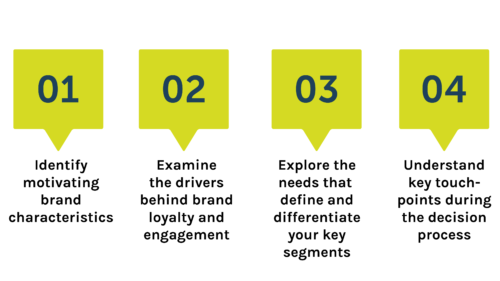“It’s not what you say, but how you say it.”
How often have we heard this phrase? It’s quoted frequently because it’s nearly universally true, from personal to professional spheres. The nuances in how we communicate can impact how receptive people are to our message. And this is just as true when it comes to the messages businesses convey to their different target audiences.
How companies communicate about their brand matters even more today as the world gets increasingly complex, consumer choices continue to explode, and products risk seeming commoditized. The most successful brands leverage messaging that makes it clear who they are and what they offer in a compelling way. A brand not taking charge of its narrative for each of its target audiences, can lead to customer disengagement and poor sales performance.
How companies communicate about their brand matters even more today as the world gets increasingly complex, consumer choices continue to explode, and products risk seeming commoditized.”
If you want to avoid the pitfalls of poor messaging and create more unique, action-inducing messaging, it’s imperative to connect deeply to your customers and their needs. This starts by developing a messaging foundation against each of your target audiences based on four pillars:

1. Identify motivating brand characteristics through simple trade-off exercises that help you prioritize the ideas that you can build messages around
2. Examine the drivers behind brand loyalty and engagement to determine which levers really seem to move the needle and should serve as the foundation for creating your messages
3. Explore the needs that define and differentiate your key segments and structure a messaging framework around the common themes and nuances
4. Understand key touchpoints during the decision process to determine where to place your messages and when to deliver different messages to different people Once you have the foundation to craft messages for each of your targets, it’s imperative to evaluate these messages before you go to market:
- How compelling are they? What you’re communicating should captivate and persuade your audience
- How believable? It’s great if consumers are motivated by what you say, but if they don’t believe you can deliver, they’re unlikely to take action
- How unique? It’s important that your message differentiates from that of your competitors
- How motivating? This is the clincher—does the message inspire action?
What’s critical to take into consideration is that messages need to align with your different target audiences. Some messages may be universal against all targets. Other messages need to be delivered only to specific audiences in specific situations. You want to avoid communicating non-relevant messages to your audiences. By creating a messaging foundation for each target audience, you will attract them to your brand with meaningful, compelling, and motivating communications.
Are you ready to create messaging foundations for your target audiences?



